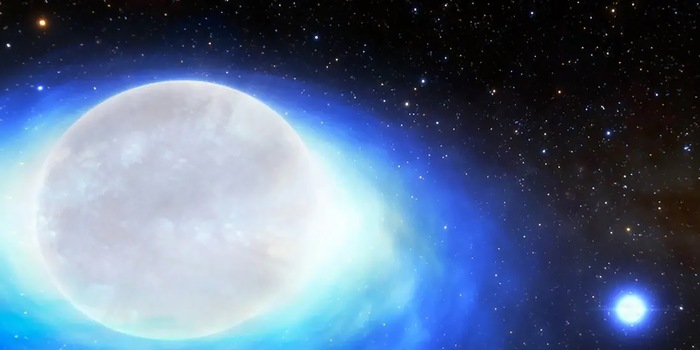
Is a kilonova imminent here?
A binary star system has been discovered in the Milky Way that could soon end up as a kilonova. There are said to be only ten such systems in total in our galaxy.
Astronomers estimate that there could only be ten binary star systems of this type in our Milky Way system: a pair of a small neutron star and a massive blue star. Noel Richardson from Embry-Riddle Aeronautical University and his team now think that CPD-29 2176 is the first detection of this constellation in our galaxy, as they report in "Nature".
In a million years, the large star will explode as a supernova and become a neutron star, which will eventually collide with its neighbour, whereupon both will end up as a kilonova. According to Richardson and Co, this would result in the formation of heavy elements such as gold and silver. A kilonova is the burst of brightness of a merging binary star whose electromagnetic radiation is fuelled by the radioactive decay of elements. It is significantly fainter than a supernova. The first time such an event was detected was in 2017 using gravitational waves.
The unusual system, CPD-29 2176, is located around 11,400 light years from Earth and was first discovered by NASA's Neil Gehrel Swift Observatory. Subsequent observations with the SMARTS telescope allowed the team to determine the orbital properties and the types of stars that make up this system: a neutron star formed by an "ultra-stripped supernova" and a massive star that is in close orbit to it and will "soon" become such a supernova itself.
An "ultra-stripped supernova" is the explosion at the end of the life of a massive star that has been stripped of most of its outer atmosphere by a companion. This class of supernova lacks the explosive power of a conventional supernova, which would otherwise eject a nearby companion star out of the system.
Previously, it had been assumed that the combination of a neutron star and a giant star could only occur once or twice among the at least 100 billion stars in the galaxy. Based on their data, the working group revised this assumption upwards to as many as ten such systems. While supernovae occur about once a century in galaxies the size of the Milky Way system, kilonovae are much rarer. However, it is only through them that some of the rarer and heavier metals are formed.
Spectrum of Science
We are a partner of Spektrum der Wissenschaft and would like to make well-founded information more accessible to you. Follow Spektrum der Wissenschaft if you like the articles.
[[small:]]
Cover image: © CTIO/NOIRLab/NSF/AURA/J. da Silva/Spaceengine/M. Zamani / Artist's Impression of Kilonova Progenitor Star System / CC BY 4.0 CC BY (detail) / Illustration of the double star system CPD-29 2176: It could end up as Kilonova in a cosmologically short time.
Experts from science and research report on the latest findings in their fields – competent, authentic and comprehensible.